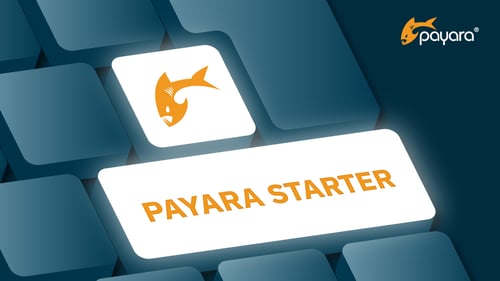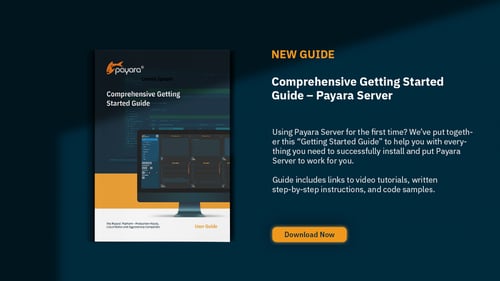Posts tagged Payara Platform (5)
Introducing Payara Starter: The Code Scaffolding Tool for Rapid Jakarta EE Development
Published on 21 Nov 2023
by Luqman Saeed
Topics:
MicroProfile,
Payara Platform,
Jakarta EE,
payara starter
|
0 Comments
In the dynamic world of software development, efficiency and speed are key. This is where Payara Starter, our new code scaffolding tool, comes in. Designed to streamline and simplify the initial setup process, Payara Starter helps developers like you kickstart your Jakarta EE projects with ease, whether you prefer Maven or Gradle build systems.
What’s New In The Nov 2023 Payara Platform Release?
Published on 16 Nov 2023
by Luqman Saeed
Topics:
JakartaEE,
Payara Platform,
Payara Enterprise,
Payara Community,
Jakarta EE
|
0 Comments
Splashing onto the scene with a tidal wave of updates, the November 2023 release of Payara Platform is here. This release brings enhancements, security fixes, and bug fixes, ensuring a more robust and efficient environment for your mission critical workload. Payara Enterprise 6.8.0 comes with 4 improvements, 3 bug fixes, 1 security fix and 1 component upgrade. Payara Community 6.2023.11 also comes with 4 improvements, 3 bug fixes, 1 security fix and 1 component upgrade.
What's New in the September 2023 Payara Platform Release?
Published on 15 Sep 2023
by Luqman Saeed
Topics:
JakartaEE,
Payara Platform,
Payara Enterprise,
Payara Community,
Jakarta EE
|
0 Comments
We are excited to announce the latest releases of the Payara Platform: Enterprise 6.6.0 and Community 6.2023.9. Payara Platform Enterprise 6.6.0 comes with 2 security fixes, 2 bug fixes, 5 component upgrades and 3 improvements. Payara Platform Community 6.2023.9 also comes with 2 security fixes, 2 bug fixes, 5 component upgrades, and 3 improvements.
For Payara Enterprise users, Payara Platform 5 is still updated! Payara Platform Enterprise 5.55.0 is out this month.
Why Jakarta EE is Better than the Competition
Published on 30 Sep 2022
by Payara Content Team
Topics:
Java EE,
JakartaEE,
Payara Platform,
Jakarta EE
|
3 Comments
Jakarta EE is the most popular Java server-side framework, way ahead its alleged competitors such as Spring, Quarkus, Micronaut or Dropwizard. With the industry-wide adoption of microservices based architectures, its popularity is skyrocketing and, during these last years, it has become the preferred framework for professional software enterprise applications and services development in Java.
In this blog, I'll explain more about Jakarta EE from my perspective as a Senior Java software architect/developer and why Jakarta EE and its runtimes beat the competition, in my opinion!
Using Jakarta EE Identity Store With Payara
Published on 28 Sep 2022
by Payara Content Team
Topics:
Java EE,
Security,
Payara Platform,
Jakarta EE
|
0 Comments
These days the world-wide open-source community celebrates the advent of Jakarta EE 10. It is then a good time to look at one of its most relevant and, at the same time, unknown parts: security!
In this blog, I'll give an introduction to Jakarta EE Security, and then explain how Payara Platform builds on Jakarta EE Security with built-in identity stores for RDBMS (Relational Database Management System) and LDAP (Lightweight Directory Access Protocol).
Comprehensive Getting Started Guide – Payara Server
Published on 23 Dec 2021
by Priya Khaira-Hanks
Topics:
JakartaEE,
Payara Platform 5,
Payara Platform,
getting started with Jakarta EE
|
0 Comments
Payara Platform is an open source middleware platform that supports Jakarta EE (formerly Java EE) applications in ANY environment: on premise, in the cloud, or hybrid.
It is a solution to GlassFish problems such as lack of supported Docker images and automation assistance, no internal monitoring system and an absence of modern security standards and critical server event alerts and notfiers. It is also an alternative to Oracle Weblogic, Wildfly, JBoss EAP, WebSphere, OpenLiberty and more.
Our previous Getting Started guide had not been updated with improvements to Payara Platform, such as our hide password with password aliases feature - and did not contain comprehensive guides to integration with other technologies.
Payara Platform October 2021 Survey Results
Published on 23 Nov 2021
by Debbie Hoffman
Topics:
JakartaEE,
Payara Platform
|
0 Comments
We’re pleased to announce that our October 2021 Payara Platform Survey results are now available!
This survey was promoted to our audience in October 2021. We shared with Payara Platform Enterprise customers and Community users via social media, emails and blogs. Thank you so much to everyone who took the time to contribute!
What's New in the September 2021 Payara Platform Release?
Published on 15 Sep 2021
by Debbie Hoffman and Rudy De Busscher
Topics:
What's New,
Payara Platform,
New Releases
|
0 Comments
The September 2021 Payara Platform release is here! Both Payara Platform Enterprise and Payara Platform Community Editions include a security fix that requires you to take action to ensure the security of your environment. (Explained below).
Payara Platform Enterprise 5.31.0 and Payara Platform Community 5.2021.7 releases each contain 10 bug fixes, 1 component upgrade, 1 security fix and 1 new feature.
You can download Payara Platform Community 5.2021.7 here and request Payara Platform Enterprise 5.31.0 here.
Read more below to learn more about the highlights of this release.
How to Update An Application Using JAXB from JDK 8 to JDK 11
Published on 18 Jun 2021
by Rudy De Busscher
Topics:
JDK 8,
Payara Platform,
JDK 11
|
1 Comment
The Java Architecture for XML Binding (JAXB) framework is used to easily convert between XML and Java class instances. You just have to define some annotations on the Java classes and properties and the framework uses those definitions to convert between them. But is also heavily used within the Java EE specification Java API for XML Web Services (JAX-WS) that implements the support for SOAP messages within Java Enterprise.
GlassFish 6.1 Should Not Be Used In Production: Here’s Why
Published on 27 May 2021
by Rudy De Busscher
Topics:
GlassFish,
JakartaEE,
Payara Platform
|
1 Comment
Earlier this week, Jakarta EE 9.1 was released. This is an update to Jakarta EE 9, adding support for JDK 11 - you can read more about it in our bloghere.
Alongside the Jakarta EE 9.1 release, GlassFish 6.1 has been released as a Compatible Implementation.
However, although GlassFish is still used by many - a legacy of the time it was supported by Oracle - we would argue it is NOT a good choice for running your enterprise applications in production.
If you are considering updating to more recent GlassFish versions, it might be better to consider more reliable, supported, and up-to-date alternatives. In this blog, I explain why GlassFish 6.x is not the best choice for your mission critical deployments.








